-
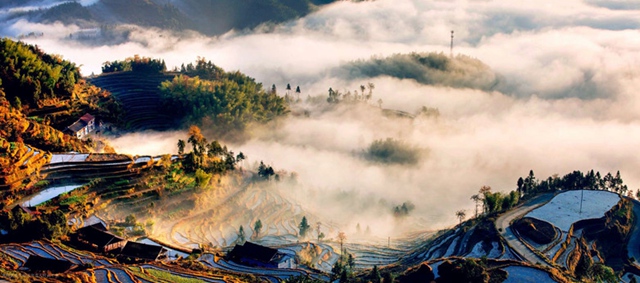
Feature: Qin People Terraced FieldTime: All the year roundTicket: 68 yuanPhone: 0738-8313881Opening Time: 8 a.m.Address: Xinhua County, Loudi, HunanAs one of the 8 new famous scenic spots in Hunan Province, Ziquejie Terraced Field is located in Shuiche of Xinhua County. 80,000 mu (5,333 hectare)terraced fields, rising one upon another at an elevation of 500 meters to 1,100 meters, are endowed with natural self-irrigation and endless spring water.Here you can appreciate the remains of ancient paddy culture and enjoy the primitive simplicity of slash-and-burn cultivation and wood-block houses.According to research, the Terraced Field which originated from Qin & Han Dynasty and developed in the Song Dynasty, has a long history of over 2,000 years and is the product of the nationalities (Miao,Yao,Tong and Han) working together as the remains of ancient paddy culture with fishing and hunting culture, reflecting the greatness of the ancient Meishan farming civilization. It is approved as a state-level scenic spot in 2005. And in 2006 it was included in the world culture and natural double heritage list.
HOT Hunan & Other regions
2022-05-23 16:46
View:4558
-
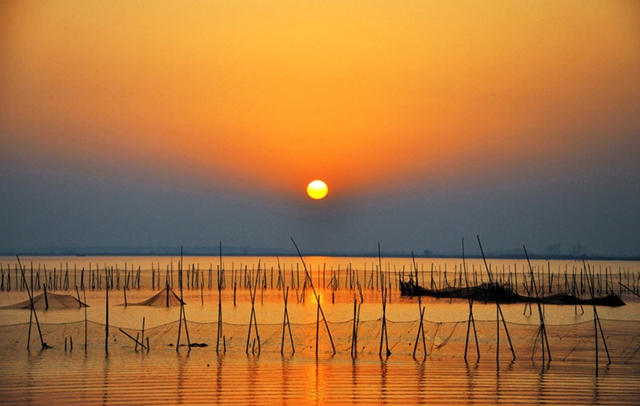
As the famous Chinese fresh water lake, second only to the Poyang Lake in Jiangxi Province, the Dongting Lake spreads wide on an area of 1,300 square kilometers.According to geologists, the lake area used to be part of an ancient anticline in south of the Yangtze River, but fell in a rupture during the movement of the Mount Yangshan 70 million years ago and became a lake.Dongting Lake is composed of East Dongting, South Dongting and West Dongting. In ancient times, East Dongting Lake was a part of Yunmeng Pool. The East Dongting Lake Nature Reserve is one of China\\\'s 30 important wetlands in the Ramsar Convention on Wetlands. Every year, 217 species of migratory birds under state protection live through the winter here, such as white storks, white cranes, grey cranes and egrets. It will be a great fun if tourists take a boat tour in the lake, observe birds, listen to the waves, go fishing and taste delicious fish dishes in the nature reserve.The Sanjiangkou Estuary (the confluence of Xiangjiang River, Yanjiang River, Jingjiang River) is another tourist attraction in Dongting Lake, where the lake meets the Yangtze River. As the lake\\\'s water is clear while the water from the river is turbid, the clear-cut currents were called by the ancients as \\\"River Meeting\\\"-a fantastic sight rarely seen elsewhere.To expedite the transportation between Hunan and Hubei provinces, in recent years, the government has built Yueyang Bridge on the Dongting Lake-the longest highway bridge in China. Spanning over East Dongting Lake, the bridge is 10, 174.2 meters long, and is the first bridge with three main towers suspended with double-cable support in China. In addition to relieving traffic pressure, the bridge provides an express thoroughfare to facilitate emergent transportation of goods for floor control.Transport: Bus Nos. 5 and 20Tel :(+86)730-8635328
HOT Changde & Yueyang & Hengyang
2022-05-22 17:26
View:5510
-
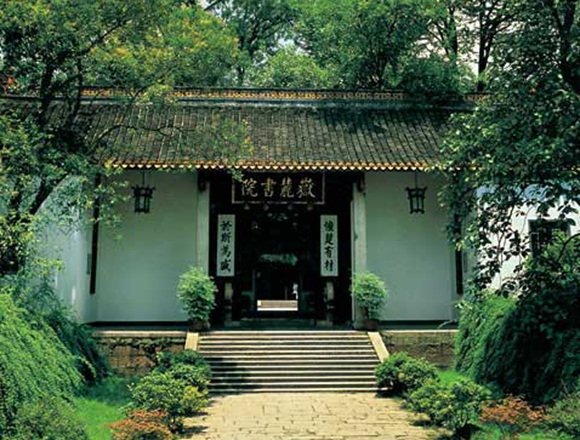
Yuelu Academy, one of the four greatest academies in ancient China, is situated at the foot of Yuelu Mountain. Yuelu Academy began to run more than 1,000 years ago. It was operated by monks in its earlier period. In 976 AD, Zhu Dong, a prefect of Tanzhou(ancient name of Changsha), took over the administrative power and handed it to the Confucian scholars. Henceforth, for more than one thousand years, Yuelu Academy has been a divine spot for Confucianism education and a center of culture and literature. Yuelu Academy mainly comprises the Main Gate, the Lecture Hall, Lushan Temple Tablet, Yushu Library, Wenchang Pavilion, Six Gentleman Hall, Ten-sacrificial-vessels Hall, Grand Sunlight Platform, the Banxue Building, the Hexi Platform, etc. The words Yue Lu Shu Yuan (Yuelu Academy) on the horizontal board of the Main Gate were inscriptions of Zhenzong, an Emperor of the Song Dynasty (960AD-1279AD). From then on, Yuelu Academy became well-known all around the country and students came to study in an endless stream. On the door posts of the gate are couplets which read Wei Chu You Cai, Yu Si Wei Sheng (the Kingdom of Chu, the unique home of talents; the Academy of Yuelu, the very cradle of all). This couplet originates from Chinese classics and it is very appropriate given the fact that talents have been brought up continuously by the Academy since its establishment. The Lecture Hall, also called a \\\"Hall of Loyalty, Filial Piety, Integraty and Chastity\\\", is a core building of the Academy. Located at the heart of the Academy, the Lecture Hall is the most important place for teaching and momentous ceremony. In the 6th year of Qiandao Reign (1168 A), Southern Song Dynasty, the famous idealist Zhang Shi and Zhu Xi made a joint lecture here, which was the first joint lecture in the Confucian academies of China. There are also many valuable culture relics of steles in the Lecture Hall. On the inner walls of the hall are engraved four big Chinese Characters- Zhong, Xiao, Lian, Jie (loyalty, piety, honesty and integrity) which were written by the great scholar Zhu Xi. Others such as \\\"Uniform and stand as a mark of respect\\\" written and set by one master of the Qing Dynasty, Ouyang Zhenghuan and the stele \\\"School Regulations\\\" written by master Wang Wenqing of Qing Dynasty are all the important historical materials for the study of the education in China\\\'s Confucian academies. They still have their own enlightening meaning to us nowadays. During a history of more than one thousand years, there have been countless talented students learning here. Especially in the late 19th century and 20th century, it witnessed a great number of patriotic thinkers, politicians, militarists, industrialists and diplomats. In 1903, the academy was converted into an advanced school and was officially renamed Hunan University in 1926. Today, Yuelu Academy, which has undergone restorations, has been listed as a key historical site under the state protection. It still shoulders the responsibility of conducting academic researches and training professionals. Transport: Bus Nos. 202, 913, 902, 305, Lishan special line, Tour line 1st. It takes just about 30 minutes ride to the railway station, and one hour to the airportAdmission (for reference): RMB 30 yuan/adultTel:(86)731-88822316Opening hours: 7:30 - 18:00 (May 1st- October 31st)8:00 - 17:30 (November 1st- April 30th)Source: Hunan Official Web Portal�
HOT Changsha & Zhuzhou & Xiangtan
2022-05-22 17:19
View:8078
-
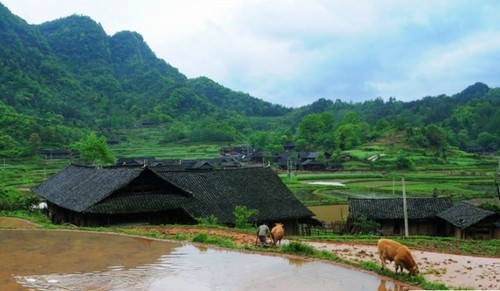
Shiyanping is situated in the southeast of Wangjiaping, Yongding District,Zhangjiajie. 68 kilometers away from Yongding urban area. Surrounded by mountains on all sides, Shiyanping Tujia village stands in the middle on a flat ground.There lives more than 70 households. It was built between Qing Dynasty and the Period of Republic of China. The 70 some combined wooden Diaojiao houses look different with kinds of shapes, Special in local favor. It represents unique Tujia culture. It is the only well-protected Tujia Village in Hunan. In 2011, It was listed a provincial culture relic protection site.Translated by Zumi
HOT Yongding District
2022-05-18 12:36
View:5249
-
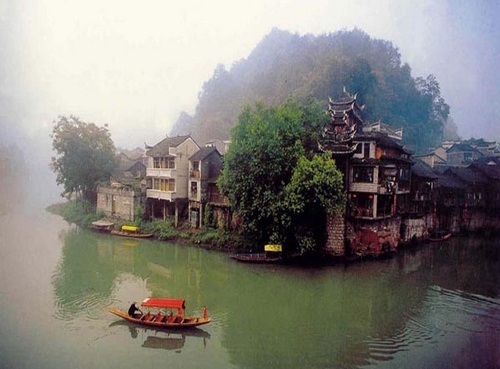
Feng Huang is Chinese for Phoenix, the mythical bird of good omen and longevity that is consumed by fire to be re-born again from the flames. Feng Huang Cheng or Phoenix Town is so called as legend has it that two of these fabulous birds flew over it and found the town so beautiful that they hovered there, reluctant to leave.The town is situated on the western boundary of Hunan Province in an area of outstanding natural beauty where mountains, water and blue skies prevail. Upon entering the town the visitor will be impressed by its air of mystery, elegance and primitive simplicity. This is a world that is dominated by the colour green. The mountain slopes are covered with green foliage, the fields are green and even the Tuo Jiang River reflects the greenery. The bridges over the water and unique houses built on stilts display a harmony that is so often portrayed in traditional Chinese paintings. This is particularly true when mist pervades the scene in the early morning or after rain. It soon becomes apparent that the claim to being one of the two most beautiful towns in the whole of China is more than justified; the other town is Chang Ting in Fujian Province. Feng Huang Cheng is a wonderful example of what villages were like prior to the onset of modernization. Here dozens of alleys paved with flagstones run between the houses, each showing wear caused by the feet of generations of local people who have used them when going about their daily business. For the visitor, these alleys are the way to see the typical high gabled wooden houses built on stilts along the banks of the Tuo Jiang River at close quarters.Stretching diagonally from the northwest to southeast of the town, Tuo Jiang River is a life force of the local people. Here in its waters women wash their clothes and the men fish with their nets, while on the bank food is prepared in much the same way as it has for centuries. The river also provides a means for boatmen to support their families by ferrying tourists up and down stream so that they may admire the many splendours of the town.The Miao ethnic minority is predominantly settled here and a visit to a Miao village is a must when going to Feng Huang Cheng. The Miao women have a natural beauty that renders the use of cosmetics quite unnecessary. They love to dress in traditional blue garments set off with a white scarf. They love also their silver jewellery especially during festivals. Visitors will find a large array of hand made items of silver ornaments for sale in the local shops. Home made tie-dyes, printed and batik cloths are other local specialities that make wonderful souvenirs. The Miao are friendly and hospitable and like nothing more than to interact with visitors with a variety of traditional entertainments and activities. Food here also is different from that found elsewhere in China. Pickled red peppers are a particular local delicacy and their appetizing smell wafts from the many small family run restaurants..Feng Huang Cheng was home to the versatile writer Shen Congwen (1902-88) who contributed greatly to the development of modern Chinese literature. Venerated by the local residents, the one time home and the tomb of this famous writer have become tourist attractions.There are two other notable people from the town worthy of mention. The first is Xiong Xiling the famous philanthropist who was the first premier of the Republic of China (1921-49) following the fall of the Manchu. The other famous citizen is Huang Yongyu, an outstanding contemporary painter in the traditional Chinese style. His frescoes illustrating Buddhist stories in the Zhunti Nunnery are a major tourist attraction.. Feng Huang Cheng does not rely entirely upon natural beauty to attract the visitor for this ancient town with a history spanning 1300 years has a number of remarkable old gardens as well as distinctive residential buildings, elegant bridges and mysterious towers and pagodas. These architectural delights date from the Ming and Qing Dynasties (1644-1911). Those of special interest are the Wengchen Pavilion, Huang Si Qiao Castle, Tian Wang Temple, Da Cheng Hall, Chao Yang Palace, and the tomb of Shen Congwen and the residence of Xiong Xiling. Here too there are the North Gate and South Great Wall both excellent examples of municipal fortification.In many ways, life has not changed here for centuries and this is typified by the tough, hard working yet simple-hearted people. Feng Huang Cheng offers the visitor from both home and abroad a view of a quite different China from anything experienced in the modern cities and large conurbations that are more widely known. We are sure that the opportunity to travel in such a picturesque region will be remembered as an experience of a lifetime.
HOT Xiangxi & Fenghuang & Huaihua
2022-03-09 10:23
View:40775
-
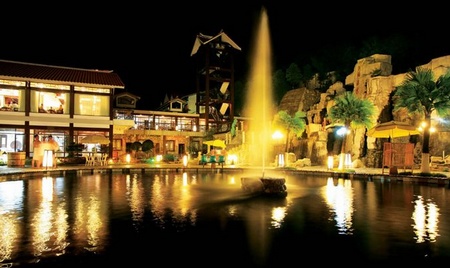
Zhangjiajie Jiangya Hot Spring Holiday Village is the first hot spring holiday village in ZJJ and the first pseudo-classic style and semi-outdoor hot spring in western Hunan as well. Over 20 varieties of unique, functional and high standard open-air and indoor hot springs are built here. Natural garden-styled arrangement, paths paved of cobble stone and slate, artificial hills and waterfalls, small bridges and flowing streams and hot spring pools are well arranged together, which give you a sense that as if you live in the country land.Spring in Jiangya Hot Spring Village is quite clear that you can see clearly the bottom of spring pools and temperature of the spring mouth is around 54℃ throughout the year. As tested by expert, spring contains a number of microelements like mineral substances which are beneficial to people’s health. Thus, it’s absolutely a super excellent place for entertainment and fitness.There is bus for people going from ZJJ to Jiangya Hot Spring Village. Bus works from 6 o’clock to 18 o’clock. Every one hour will have a bus get started. Usually, the bus ticket is 20 yuan per person. You can take the bus at the gate of Guang He supermarket on Zi Wu Road in ZJJ. The ticket for the Jiangya Hot Spring Village is 115 yuan. May you have a good time in ZJJ.By Brenda
HOT Cili County
2021-12-10 14:53
View:7802
-
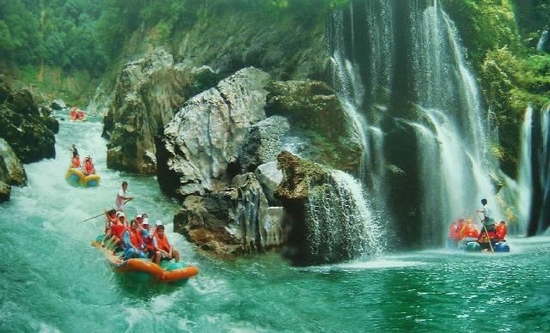
Mengdonghe River is situated 80km southeast of Zhangjiajie city, nestled among mountains, a remote canyon towering limestone cliffs, a beautiful river that’s ranked among the top ones in china. 2 hours drive from zhangjiajie city, Rafting usually take 3 hours. Wide calm river section take another 3 hours ending at Furong town that’s well preserved old town famous for its old streets and stilted houses, it is worth visit.You’ll thrill to the excitement of the major rapids of the Mengdonghe River; there are a few of the rapids that get your heart pounding. The rapids are interspersed with calm stretches, which give you a chance to enjoy the breathtaking scenery. Gentle rapids carve a pathway through mountains and provide plenty of chance to swim, spot wildlife, take the fried the river fish, and just relax.Getting Prepared:Below are suggested items you should bring for your trip. You will enjoy your trip more if you are prepared for varying weather conditions.. Always Bring:Swimsuit shorts wool sweaters or synthetic fleece wool socks windbreaker jacket and pants, footwear that can get wet (plus a dry pair for after your trip) dry clothes and towel.. Sunny Days Sun screen sunglasses baseball cap or visor.Cool weather synthetic longjohns wool hat and gloves.Wet SuitCotton is not recommended (this includes jeans and sweatshirts) when it is wet it robs your body of heat and is unsuitable for physical activity. Synthetic clothing is the best.You receive instructions from guided assistance..The ticket includes insurance; the child under 13 is not suggested for rafting.
HOT Xiangxi & Fenghuang & Huaihua
2021-11-12 10:56
View:18609
-
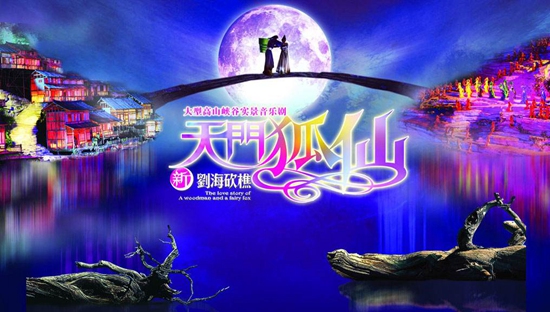
This show, The Love Story of a Woodman and a Fox Fairy, is a romantic love story between a fox fairy and an ordinary woodman making a living by chopping woods. The fox fairy, different from other foxes, never hunts human and is very kind and incredibly
HOT Performance
2021-10-15 17:23
View:4628












